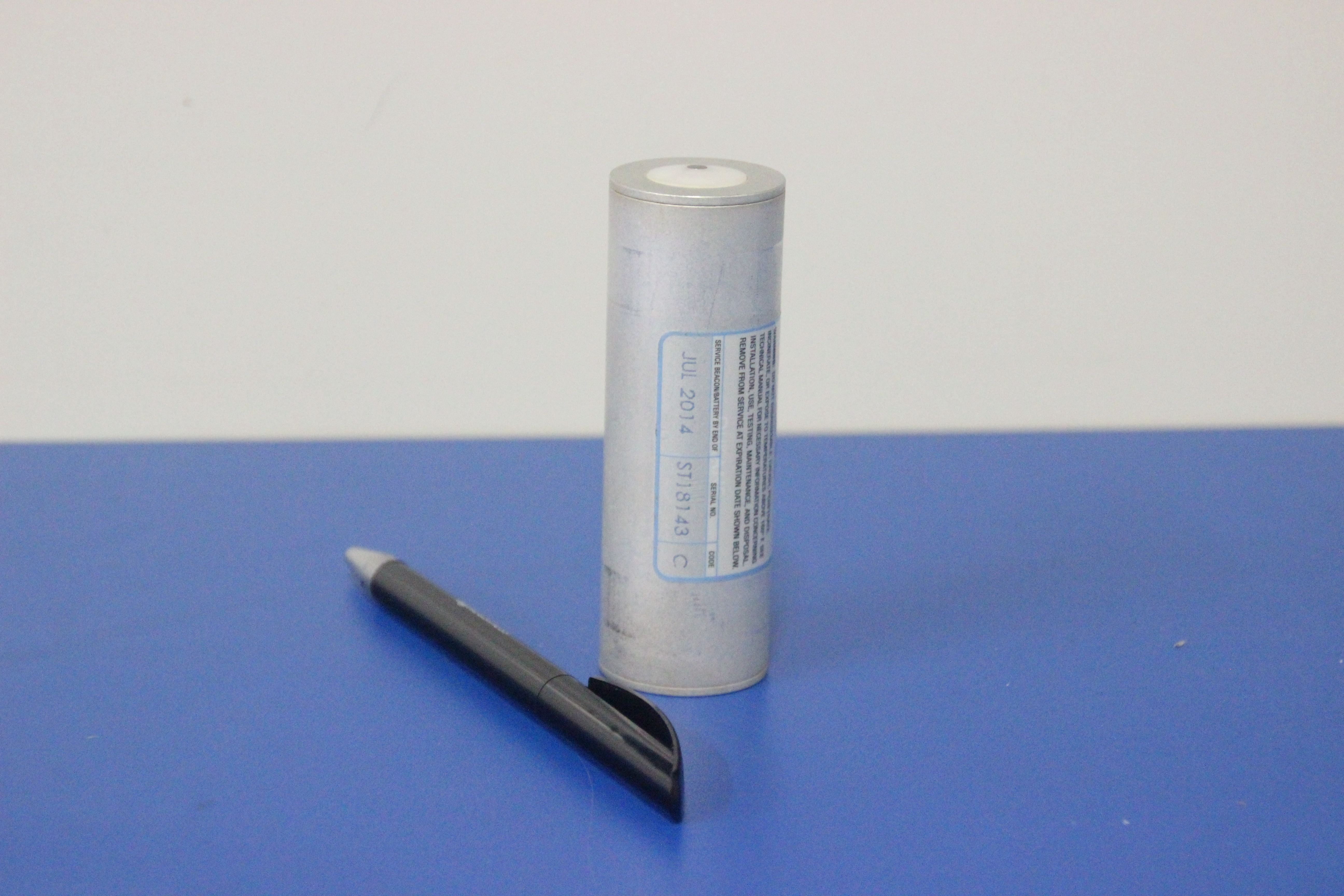Underwater Locator Beacon on:
[Wikipedia]
[Google]
[Amazon]

 An underwater locator beacon is a device that guides search and rescue teams to a submerged aircraft by emitting a repeated electronic pulse.
An underwater locator beacon is a device that guides search and rescue teams to a submerged aircraft by emitting a repeated electronic pulse.
DK120 Underwater Acoustic Beacon
Underwater Locator Beacon detection ranges for fuselage encapsulated recorders (FAA 1968 study)
Aircraft emergency systems Beacons
Application
An underwater locator beacon (ULB) or underwater acoustic beacon, is a device fitted to aviation flight recorders such as thecockpit voice recorder
A flight recorder is an electronic recording device placed in an aircraft for the purpose of facilitating the investigation of aviation accidents and incidents. The device may often be referred to as a "black box", an outdated name which has ...
(CVR) and flight data recorder
A flight recorder is an electronic recording device placed in an aircraft for the purpose of facilitating the investigation of aviation accidents and incidents. The device may often be referred to as a "black box", an outdated name which has ...
(FDR). ULBs are also sometimes required to be attached directly to an aircraft fuselage
The fuselage (; from the French ''fuselé'' "spindle-shaped") is an aircraft's main body section. It holds crew, passengers, or cargo. In single-engine aircraft, it will usually contain an engine as well, although in some amphibious aircraf ...
. ULBs are triggered by water immersion; most emit an ultrasonic
Ultrasound is sound waves with frequencies higher than the upper audible limit of human hearing. Ultrasound is not different from "normal" (audible) sound in its physical properties, except that humans cannot hear it. This limit varies fr ...
10ms pulse once per second at 37.5 kHz ± 1 kHz.
Research by the French ''Bureau d'Enquêtes et d'Analyses pour la Sécurité de l'Aviation Civile
The Bureau of Enquiry and Analysis for Civil Aviation Safety (BEA, ) is an agency of the French government, responsible for investigating aviation accidents and incidents and making safety recommendations based on what is learned from those inve ...
'' (BEA) has shown that it has had a 90% survival rate spanning 27 air accidents over the sea. The ULBs fitted in Air France Flight 447
Air France Flight 447 (AF447 or AFR447) was a scheduled international passenger flight from Rio de Janeiro, Brazil, to Paris, France. On 1 June 2009, inconsistent airspeed indications led to the pilots inadvertently stalling the Airbus A330 ser ...
, which crashed on 1 June 2009, were certified to transmit at 37.5 kHz for a minimum of 30 days at a temperature of 4 °C. Investigating the crash, the BEA recommended that FDR ULBs' transmission period be increased to 90 days and for "airplanes performing public transport flights over maritime areas to be equipped with an additional ULB capable of transmitting on a frequency (for example between 8.5 kHz and 9.5 kHz) and for a duration adapted to the pre-localisation of wreckage" (i.e. with increased range).
On ships built on or after 1 July 2014, underwater locating devices must ensure a regulatory transmission time of at least 90 days.
Power source and activation
A beacon is typically supplied with electrical power by a lithium battery, which needs to be replaced after several years. Once the beacon becomes immersed into water, a built-in "water switch" activates it via the water's presence completing an electrical circuit, and the beacon starts emitting its "pings"; the battery power should be sufficient for 30 to 40 days after the activation. The minimum battery voltage is 2.97 volts and the maximum is 3.5 volts. The National Transportation Safety Board reported a case in 1988, involving an Aerospatiale AS-355F-1 helicopter, when the water switch had accidentally activated during the aircraft's normal operation; as a result, the battery power had been exhausted by the time the accident happened, and the beacon was not emitting the acoustic signal when it needed to do so.Maximum detection range
A 37.5 kHz (160.5 dB re 1 μPa) pinger can be detectable from the surface in normal conditions and under ideal conditions.See also
*Towed pinger locator
A towed pinger locator is a water-borne device used to locate the sonar "ping" from the underwater locator beacon which is fitted to the Cockpit Voice Recorders and Flight Data Recorders installed in commercial airliners. They can locate pingers ...
* Underwater acoustics
Underwater acoustics is the study of the propagation of sound in water and the interaction of the mechanical waves that constitute sound with the water, its contents and its boundaries. The water may be in the ocean, a lake, a river or a tank. Ty ...
* Sonar
Sonar (sound navigation and ranging or sonic navigation and ranging) is a technique that uses sound propagation (usually underwater, as in submarine navigation) to navigate, measure distances (ranging), communicate with or detect objects on o ...
* Emergency locator beacon
An emergency locator beacon is a radio beacon, a portable battery powered radio transmitter, used to locate airplanes, vessels, and persons in distress and in need of immediate rescue. Various types of emergency locator beacons are carried by air ...
References
External links
{{commons category, Underwater locator beaconDK120 Underwater Acoustic Beacon
Underwater Locator Beacon detection ranges for fuselage encapsulated recorders (FAA 1968 study)
Aircraft emergency systems Beacons